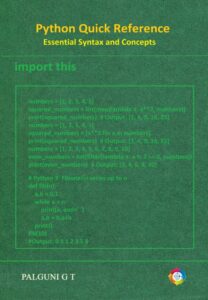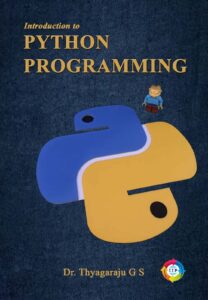Course Objectives:
- Introduce the fundamentals of Artificial Intelligence, its types, workflow, real-world applications, and key domains like CV, NLP, and Data Science.
- Develop core data literacy skills, including data acquisition, preprocessing, interpretation, and secure handling using both code and no-code tools.
- Explore AI modelling techniques, covering rule-based and learning-based models, neural networks, and key evaluation metrics.
- Provide hands-on experience in AI applications, especially in Computer Vision and Natural Language Processing, through practical tools and projects.
- Foster responsible AI development, by understanding the AI Project Cycle, ethical frameworks, AI for sustainability, and societal impact.
Syllabus
Module 1: Foundations of Artificial Intelligence
- What is Artificial Intelligence?
- Difference between AI and Automation
- Applications of AI in everyday life
- How AI works: Basic AI workflow
- Types of AI: Narrow AI, General AI, Super AI
- Introduction to domains of AI: Computer Vision, Natural Language Processing, Data Science
- Importance of Mathematics in AI
- Basics of Statistics and Probability
- Role of Math in AI decision-making
- Exercises
- Objective Type Questions
- Subjective Types Questions
- Activities
- Aaaaaa
- aaaaaaa
Module 2: Data Literacy and Understanding Data
- What is Data Literacy?
- Impact of data literacy in AI
- Types and sources of data
- Data security, privacy, and cyber safety best practices
- Data acquisition and pre-processing
- Importance of data interpretation
- Interactive Dashboard and Visualization
- No-Code tools for creating visual charts
- Use Case: Orange Data Mining (Palmer Penguins dataset)
- Real-life examples: Recommendation systems, AI assistants
- Exercises
- Objective Type Questions
- Subjective Types Questions
- Activities
- Aaaaaaa
- aaaaaaa
Module 3: Modelling in AI
- AI, ML, and DL
- Key differences and relationships
- Common terminologies used in ML
- Types of AI models:
- Rule-based and Learning-based AI
- Supervised, Unsupervised, and Reinforcement learning
- Subcategories: Classification, Regression, Clustering, Association
- Neural Networks
- Concept and how machines make decisions
- Evaluation of AI Models:
- Train-Test Split
- Accuracy, Error
- Confusion Matrix
- Precision, Recall, F1 Score
- Tools and Activities:
- Teachable Machine
- Infinite Drum Machine
- Containment Zone Prediction Model
- Exercises
- Objective Type Questions
- Subjective Types Questions
- Activities
- Aaaaaa
- aaaaaaa
Module 4: Computer Vision
- What is Computer Vision (CV)?
- Real-life CV applications: Face recognition, self-driving cars, medical imaging, retail
- Sensors and perception in AI
- Vision-based AI systems and how they work
- CV Tasks:
- Image Classification
- Object Detection
- Image Segmentation
- Basics of image representation:
- Pixels, resolution, grayscale and RGB images
- Technical Concepts:
- Image features
- Convolution, Kernels
- CNN: Layers and architecture (Convolution, Pooling, ReLU, Fully Connected Layer)
- Tools and Libraries:
- No-code tools: Lobe, Teachable Machine
- Python libraries: OpenCV, TensorFlow, Keras
- Exercises
- Objective Type Questions
- Subjective Types Questions
- Activities
- Aaaaa
- aaaaa
Module 5: Natural Language Processing (NLP)
- What is NLP?
- Importance and features of human vs computer language
- NLP Applications:
- Chatbots, Translation, Voice Assistants
- Sentiment Analysis, Auto-generated Captions
- NLP Pipeline:
- Lexical, Syntactic, Semantic, Discourse, Pragmatic Analysis
- Text Processing:
- Text Normalization
- Bag of Words
- TFIDF and its applications
- Tools and Use Cases:
- Code and no-code tools (e.g., Orange)
- Sentiment analysis mini-project
- Scripted vs Smart Chatbots
- Exercises
- Objective Type Questions
- Subjective Types Questions
- Activities
- Aaaaa
- aaaa
Module 6: Generative AI and AI for Society
- Introduction to Generative AI
- What it is and how it works
- Examples and applications: Text, Image, Music, Code
- AI for Social Good:
- Importance of sustainability
- AI’s role in achieving SDGs
- Systems Thinking:
- Introduction to system maps
- Use of system maps in AI planning and decision making
- Exercises
- Objective Type Questions
- Subjective Types Questions
- Activities
- Aaaa
- aaaa
Module 7: AI Project Cycle
- Overview and significance of the AI Project Cycle
- Six stages of the cycle:
- Problem Scoping
- Data Acquisition
- Data Exploration
- Modelling
- Evaluation
- Deployment
- Mapping real-world problems to AI stages
- Application of the AI Cycle in hands-on projects
- Exercises
- Objective Type Questions
- Subjective Types Questions
- Activities
- Aaaa
- aaaa
Module 8: Ethics in AI
- Difference between Ethics and Morality
- Understanding fairness, transparency, and accountability
- Common ethical dilemmas in AI systems
- AI Bias: Sources, identification, and mitigation strategies
- Ethical Frameworks:
- Importance and need
- Types of ethical frameworks
- Principles of Bioethics
- Case-based Learning:
- Moral Machine Activity
- Evaluating Ethical Scenarios
- Exercises
- Objective Type Questions
- Subjective Types Questions
- Activities
- Aaa
- Aaa
Course Outcome:
Students will be able to:
- Define and differentiate AI from automation, explain its types, and identify real-life applications across domains like CV, NLP, and Data Science.
- Demonstrate proficiency in data handling, from collection to visualization, using Python libraries and no-code tools, while applying best practices for privacy and security.
- Apply appropriate AI models and techniques, including supervised, unsupervised, and neural network approaches, and evaluate their performance effectively.
- Build basic AI applications in Computer Vision and NLP, including chatbot design, sentiment analysis, image recognition, and real-world case studies.
- Design ethically sound AI projects, map real-world problems to the AI Project Cycle, and propose AI solutions aligned with SDGs and ethical principles.
References
..Dr.Thyagaraju G S


